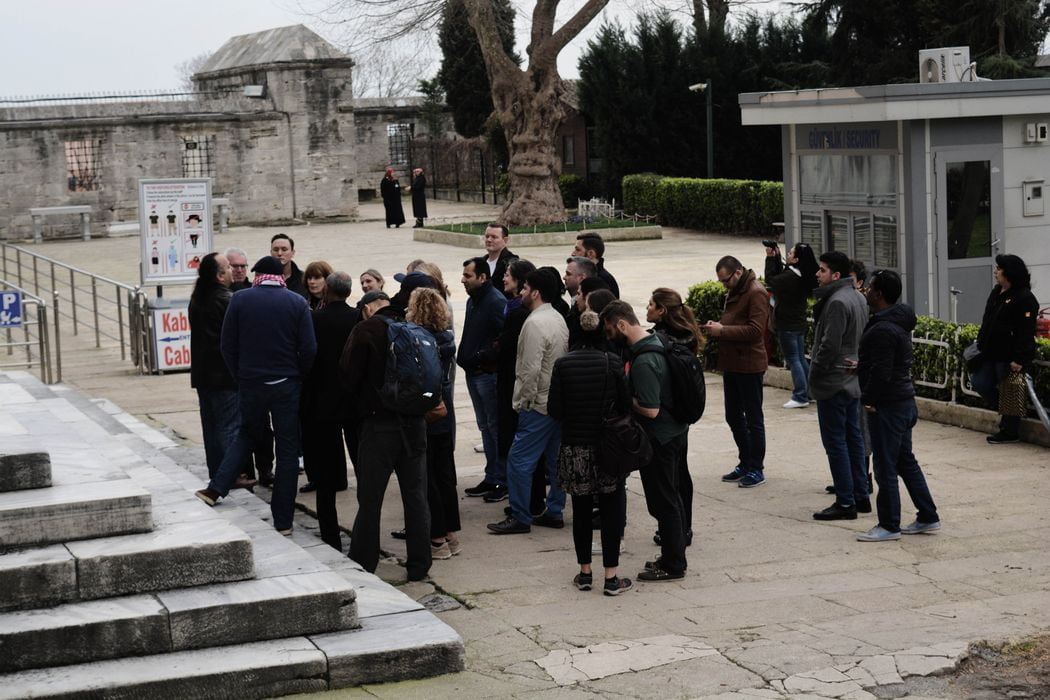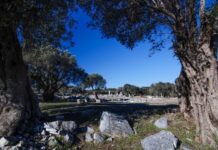But no sense of the historian’s high vocation and essential impartiality could damp the racy individualism of Psellus’s approach nor the delicate artistry of his style and language. His enlivening devices, his literary resources, his rich and varied vocabulary, are all revealed in the elegant brilliance and swift movement of his picture of Byzantine life. His descriptions of per sonalities have become famous, and in two cases at any rate his accuracy and fullness of detail have been confirmed by the recent uncovering of the imperial portraits in mosaic work decorating St. Sophia, the cathedral of Constantinople.
Here in the south gallery, when the layers of Turkish plaster were removed, the elderly Empress Zoe was revealed, with her unwrinkled skin and plump cheeks, her pencilled eyebrows and made-up features, just as Psellus had known her. Standing on the other side of the enthroned Christ was her third husband, Constantine IX Monomachus, also corresponding closely to Psellus’s description of the kindly, affectionate, and on occasion frivolous, ruler who had been his chief patron.
Much else can be found in the Chronographia besides lifelike portraits of individuals (including one of the author himself). There is a good deal of both direct and indirect information on the Byzantine conception of the imperial office, and there are some hints on the relation between Emperor and Patriarch (though Psellus is on this occasion very discreet in writing about the Patriarch Michael Cerularius who challenged the accepted interdependence of church and state).
The Christian background and the workings of a divine Providence are assumed; great emphasis is placed on a good education and a right appreciation of the intellectual heritage of the Hellenic world. Much is omitted. This is particularly true of political and administrative history, especially foreign policy, but such information can often be found in other, and less lively, histories of the period and must in any case be supplemented from sources of a different nature. The picture can be filled out from such records as documents, usually either imperial or monastic, from literary writings both secular and ecclesiastical, and above all from the monuments of the period, whether mosaics in St. Sophia or the more remote but no less impressive work surviving in such monastic churches as that of St. Luke in Phocis.
But whatever its defects and inadequacies there can be no substitute for the Chronographia itself. A twelfth-century satirist who imagined the descent of Psellus to the realm of the underworld, described the warmth with which he was welcomed by other scholars already there. And with good reason. Michael Psellus must have been a first-rate companion (whether in this world or the next) and he was certainly an entertaining writer.
THE CHRONOGRAPHIA OF MICHAEL PSELLUS A.D. 976-1077
The Chronographia composed by the most learned and right honourable monk Michael, in which are recounted the deeds of the following Emperors: Basil and Constantine, the Porphyrogeniti; their successor, Romanus Argyropulus; Michael the Paphlagonian; Michael, nephew of the last-named, who originally had the title of Caesar; the two sisters Zoe and Theodora, also Porphyrogenitiae and both princesses; Constantine Monomachus, who shared the throne with them; the princess Theodora, one of the aforementioned sisters, who ruled as Empress alone; Michael the Aged; Isaac Comnenus. The History ends with the proclamation of Constantine Ducas.
Read More about Ibn Battuta part 51








